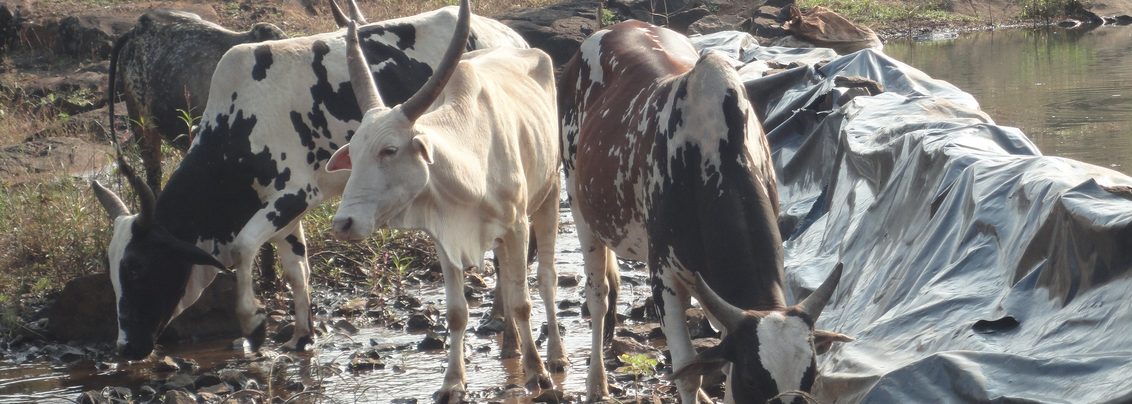
How Dry Runs help tackle drought
Foundation extends smallholder insurance to Asia
The Syngenta Foundation is building on experience from East Africa to bring innovative risk management to smallholders in South East Asia. In 2015, the Agriculture Insurance Solutions Team piloted a product in India (s. below). It is also working in Indonesia*, Bangladesh and Myanmar.
“New countries mean new risk profiles and client demands”, explains Olga Speckhardt, the Foundation’s Head of Global Insurance Solutions**. “So we are in the field seeing what farmers here really need.” This is particularly important in Myanmar, where the Foundation has no operational experience. However, even in the other countries, where we already have local teams, insurance represents a new field of activity.
“In each country we start with a feasibility study”, adds Speckhardt. “This assesses the local viability of insurance as a risk management tool. We discuss with a wide range of stakeholders how we can support local adoption of agricultural insurance.” The stakeholders include farmers, cooperatives, officials, meteorologists, input suppliers, insurance companies, NGOs, banks and mobile phone providers. “We also look how we can best distribute new insurance products to large numbers of smallholders, for example in cooperation with the local private sector.”
The next stage is a Dry Run. In Myanmar, for example, we partnered with a Burmese NGO, Proximity Designs, to track 35 rice and sesame farmers from land preparation to harvest. Extension officers visited the smallholders weekly throughout the season. They recorded farm activities, input use, plant development, and any risks to the crop. “With these data, we can ensure that new insurance products are right for the farmers”, Speckhardt continues. “That means covering their major risks and ensuring any pay-outs come at relevant times.”
To address drought risks, for example, Syngenta Foundation India launched a Replanting Guarantee for corn seed. 700 smallholders in northern India participated in the pilot project. The insurance product was similar to one available in Kenya. The Indian model protected corn farmers for the first 21 days after planting. If drought occurred in this period, they received the value of the bag of seed via mobile money transfer. The pilot ran well, and indicated the potential for a new approach to crop insurance in India. For further details, see below.
As Olga Speckhardt emphasizes: “Strong private sector links are critical to reach large numbers of smallholders with scalable solutions. We are now actively developing partnerships with produce buyers and farmers’ cooperatives, many of which have worked with us before in India and Indonesia.”
Here is our 2017 factsheet on Helping farmers grow confidently: Agricultural insurance solutions for Asia
Watch the discussion about insurance at the 2017 IAIS conference in Malaysia. The event brought together insurance regulators and practitioners from a wide range of countries. Our Olga Speckhardt was among the panelists.
* Read a partner organization's story about how "insurance games" help Indonesian smallholders understand concepts related to climate risk (October 2017).
**Read what Olga wrote in May 2017 about shifting risk: giving smallholders broader shoulders. This editorial appeared in connection with a conference in Germany. Participants discussed "Scaling up agricultural adaptation through insurance - Bringing together insurance, big data and agricultural innovation". Among the topics was our earlier insurance work in Africa. You'll find the conference blog, video, background info, presentations and editorials here.
Olga Speckhardt is in frequent demand as a speaker and panelist. Here are summaries and podcasts from an October 2017 conference on "Catastophic and index insurance in developing countries". And here is what she wrote in connection with the November 2017 COP23 climate talks in Bonn. Many participants there again unwisely left farming on the margins of discussion.
Here's more about other work we do in Bangladesh.
Weather insurance in India - a Syngenta Foundation pilot
India is currently witnessing a ‘corn revolution’. By increasing their use of hybrid corn varieties, farmers are gaining higher yields and better incomes. However, many are still reluctant to sow hybrid corn seeds in the kharif season (June-October), as there is always a chance of monsoon failure. The Syngenta Foundation knows that the business risks lie entirely on farmers’ shoulders – and aims to alleviate them. The Foundation has considerable experience with smallholder insurance in East Africa. A popular insurance product available there thanks to the ‘Kilimo Salama’ initiative is a ‘Replanting Guarantee’. Syngenta Foundation India (SFI) has now piloted such a product in India.
In this pilot, Syngenta India Limited added insurance cards to its bags of ‘NK-30’ corn seed. These were available to numerous smallholders farming about 6250 acres in a district of Rajasthan. The weather insurance used rainfall as its measurable parameter. Farmers were eligible for payout if too little rain fell between June 15 and July 15. Farmers registered for the insurance by calling a toll-free number and giving the unique code on their insurance card. They received immediate policy confirmation by SMS (phone text message).
Each participant was mapped to one of the seven automatic weather stations in the pilot region. If the weather station reported insufficient rain, the insurance company initiated the claim process and transferred money to the farmer’s bank account. He or she could therefore afford to replant – and because everything happened so soon after June 15, still had time to do so. The project partners were ICICI Lombard (insurance), NCML (weather data), RMLISPL (call center), Amicus Brokers (insurance brokerage) and Syngenta India Limited (seeds).
Here's more on weather insurance in India. The first smallholders registered for a Replanting Guarantee.
Read about our index insurance for farmers producing seed.
